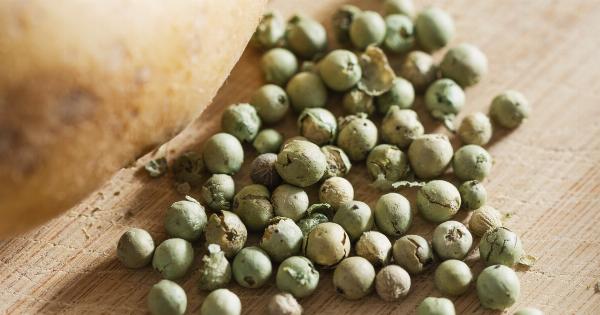Acid reflux, also known as gastroesophageal reflux disease (GERD), is a common digestive disorder that affects millions of people worldwide. It occurs when the acid from the stomach flows back into the esophagus, causing discomfort and pain.
While medication can help alleviate the symptoms, changing your diet can also be an effective way to manage acid reflux symptoms. Here are some culinary solutions to help you manage acid reflux:.
1. Avoid Trigger Foods
The first step to managing acid reflux is to avoid trigger foods. These are foods that can aggravate or trigger acid reflux symptoms. Some of the most common trigger foods include:.
- Spicy foods
- Citrus fruits and juices
- Caffeinated beverages (coffee, tea, soda)
- Tomatoes and tomato-based products
- Garlic and onions
- High-fat foods (fried foods, fast food, high-fat dairy)
- Chocolate
While it may be difficult to avoid these foods completely, reducing your consumption can help alleviate symptoms.
2. Eat Smaller Meals
Eating large meals can put pressure on the stomach, which can cause acid to flow back into the esophagus. To avoid this, try eating smaller, more frequent meals throughout the day. This can also help with digestion and prevent overeating.
3. Avoid Eating Late at Night
Eating late at night can also contribute to acid reflux symptoms. Try to avoid eating at least two to three hours before bedtime. This will give your stomach time to digest your food before you lie down.
4. Choose Low-Acid Foods
Choosing low-acid foods can also help manage acid reflux symptoms. Some low-acid foods include:.
- Bananas
- Apples
- Melons
- Oatmeal
- Rice
- Lean proteins (chicken, fish, turkey)
- Leafy greens
These foods are less likely to trigger acid reflux symptoms and are easier on the digestive system.
5. Use Spices and Herbs
While some spices can trigger acid reflux symptoms, others can actually help alleviate them. Ginger, for example, has natural anti-inflammatory properties that can help reduce inflammation in the stomach and esophagus.
Other spices and herbs that can help include:.
- Turmeric
- Cinnamon
- Fennel
- Cardamom
Using these spices and herbs in your cooking can add flavor without triggering acid reflux symptoms.
6. Avoid Carbonated Beverages
Carbonated beverages, such as soda, can contribute to acid reflux symptoms by increasing the amount of gas in the stomach. This gas can then push stomach acid up into the esophagus.
To avoid this, choose still water or herbal tea instead of carbonated beverages.
7. Cook with Care
The way you cook your food can also affect your acid reflux symptoms. Avoid frying, as this can increase the fat content of your food. Instead, try grilling, baking or sautéing your food. Avoid using large amounts of oil or butter in your cooking.
8. Stay Hydrated
Drinking plenty of water can help keep your digestive system functioning properly. It can also help dilute stomach acid and prevent it from flowing back into the esophagus.
9. Chew Your Food Thoroughly
Chewing your food thoroughly can help with digestion and prevent acid reflux symptoms. It can also help you eat more slowly, which can prevent overeating.
10. Keep a Food Diary
Keeping a food diary can help you identify trigger foods and track your progress in managing acid reflux symptoms. Write down what you eat, when you eat it and any symptoms you experience afterwards.
Managing acid reflux symptoms can be challenging, but making dietary changes can help alleviate symptoms. These culinary solutions can help you manage your acid reflux symptoms and improve your overall digestive health.



























